What is the full form of ETFETF: Exchange Traded FundETF stands for Exchange Traded Fund. It works more or less like a stock and can be referred to as a security basket that can also be used for trading on the stock market. The exchange-traded fund works by pooling the financial resources of different people and using them for buying various assets like shares and debt securities like bonds and derivatives. The registration of most of the ETFs is with the SEBI, which stands for the Securities and Exchange Board of India. Exchange-traded funds it considered a good option for those investors who aren't that experienced in the stock market field. What Is an Exchange-Traded Fund (ETF)?Exchange-traded fun is a kind of collected investment security that works more or less like a mutual fund. ETFs usually track assets such as any particular sector, index, commodity etc., but in contrast to mutual funds, ETFs are the kind of funds which are possible to be sold or bought on a stock exchange just like that a regular stock. This kind of fund can be arranged to track down mostly everything, from the monetary value of an individual commodity to the price of a diverse bunch of securities. 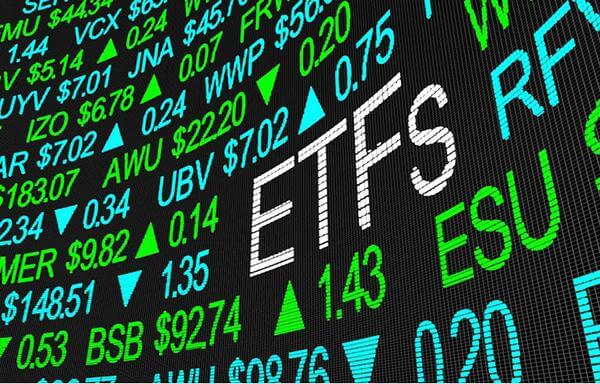
Understanding Exchange-Traded Funds (ETFs)Exchange-traded funds are given this name because of the ways in which they process. ETFs are traded in a way which is similar to mutual funds, that is, by the exchange. The price of ETF shares fluctuates throughout the day of the trade as the shares are sold and brought on the market. This, however, is not the same in mutual funds as they are not traded on an exchange but instead traded just once per day after the closing of the share market. In addition to this, exchange-traded funds are comparatively more cost-effective and more liquid. That is, they can be easily exchanged for cash. The exchange-traded fund is that type of fund which includes various underlying assets, in contrast to mutual funds, which hold only one. With these multiple assets in it, ETFs are growing more popular and tend to be a better choice to accomplish diversity in investment. Therefore, ETFs contain many different kinds of investments, such as stocks, bonds, commodities and a mixture of different types of investments. These funds have the capability of holding thousands of stocks across different industries, or they could also stick to one single sector or industry. 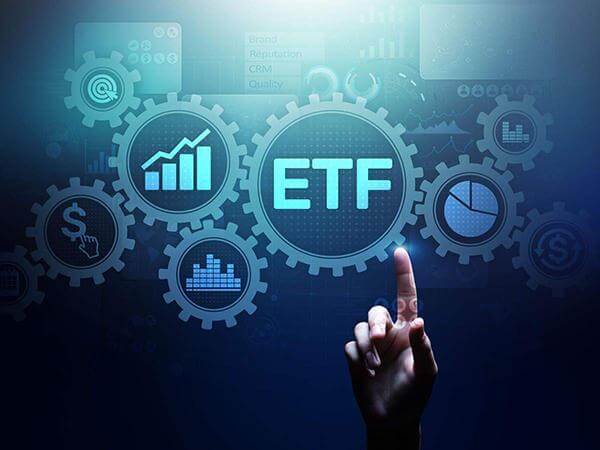
An exchange-traded fund is regarded as marketable security, which means that it has a particular share price that ensures that it can be easily sold and bought on exchanges in the market throughout the day. Types of ETFsThere are different types of exchange-traded funds that are available to the investors in the market, and they can be used for various purposes such as price increase, income generation and speculation. It could also be used to protect the investor's portfolio from the upcoming risks in it. Given below is a brief description of a few types of ETFs that are present on the market nowadays.
Passive and Active ETFsETFs are characterised by two main types of management techniques. They are either actively or passively managed. Passive ETFs focus on replicating and repeating the performance of a much wider index. It can either be a diversified index or a more particular targeted trend instead. Actively managed funds usually do not target any kind of index of securities; instead, it has people who manage portfolios and decide which security will be included in the portfolio. They are the decision-makers for the portfolio. Actively managed funds have more benefits as compared to that passive ones, but active ETFs are also very expensive to investors. Active managed ETFs are described and discussed below. i) Bond ETFs Bond ETFs are the type of funds that are used for the production of regular income for investors. The income is distributed on the basis of the performance of underlying bonds. These bonds can either be government, corporate, state, or local bonds- which are also known as municipal bonds. In contrast to the underlying instruments, bond ETFs do not possess a maturity date. These types of bonds generally trade at a premium or lower price than their actual bond price. ii) Stock ETFs Stock ETFs are the ones that have a bunch of stocks to track an individual sector or industry. For instance, a stock ETF might work by tracking foreign or automotive stocks. The goal here is to deliver a large amount of exposure to one single industry. This industry could be one which involves better performers and new individuals having great potential for the growth of the industry. Stock ETFs aren't like stock mutual funds as stock ETFs costs fewer fees and don't include true ownership of securities in them. iii) Industry/Sector ETFs 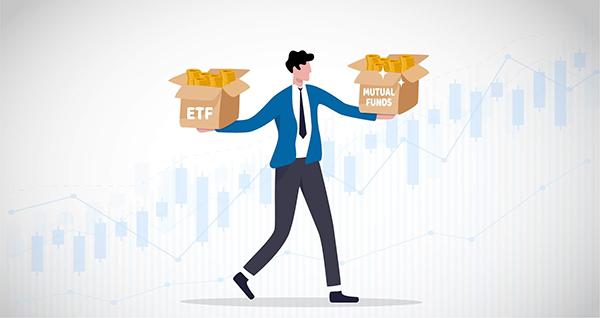
Industry funds are also called sector funds, and they have their focus on a particular industry or sector. For example, an ETF which belongs to the energy sector will include all the organisations that operate in that sector. The main aim behind sector ETFs is to obtain exposure to the upside of the given sector by closely observing the performances of the organisations that are running in that industry. A good example of this could be the technology sector which has seen an influx of huge amounts of funds in previous years. In addition to all this, the downside of this fluctuating stock performance is also restricted in the case of ETFs as they do not really involve true ownership of the securities of an industry. Industry ETFs are also helpful in rotating in and out of the industries at the time of economic cycles. iv) Commodity ETFs Just as the name indicates, commodity ETFs are used to invest in commodities such as gold and crude oil. A number of benefits come with commodity ETFs. A very important benefit of these ETFs is that they help in adding diversity to the portfolio of an organisation, making the process of stopping downturns a lot easier. The best example of this is commodity ETFs can act as cushions during downfalls in the market. The second benefit is that commodity ETF costs a lot less as compared to buying actual possessions of that commodity. The reason behind this is that commodity ETFs don't involve in it the costs of storage and insurance. v) Currency ETFs 
Currency ETFs refer to the pooled investment automobiles that keep an eye on the performance of currency pairs that consist of foreign as well as domestic currencies. This kind of ETF serves a number of purposes. They can be utilised to invest in the price of the currency of a country which depends upon the economic and political situation of that country. They can also help in increasing diversity in an organisation's portfolio or act as a barrier against volatility in forex markets by the exporters and importers. Some of these ETFs are also used as a hedge against inflation which acts as a threat to economic growth. Even Bitcoins have an ETF option. vi) Inverse ETFs This kind of ETF tries to earn profit from the decline of stocks by shorting stocks. Shorting refers to selling a stock with the expectation of a declining value and purchasing it again at a lower price. Inverse ETFs take help from derivatives to short a particular stock. Derivatives are the bets that the market is going to decline. When the bet is right, and the market declines, an inverse ETF rises by a proportionate value. Investors should always keep in mind that a lot of inverse ETFs are exchange-traded notes, not real exchange-traded funds. An ETN refers to a bond that trades like a stock, and it is backed by a supplier, for example, a bank. Investors should make sure to confirm with their broker whether an ETN suits their portfolio or not. vii) Leveraged ETFs A leverage ETF draws its attention towards returning some multiples (like 2x or 3x) on the return of some previous underlying investment. To understand this, let us consider S&P 500. If the company rises by 1%, a 2x leveraged ETF of the company will bring back 2% and if the opposite happens and the company falls by 1%, the leveraged ETF would lose 2%. These kinds of products take the help of derivatives like futures contracts or options to leverage their return from the market. In addition to normal leveraged ETFs, leveraged inverse ETFs are also there, and they attempt to gain profit by inverse multiplied returns. Online Brokers vs Traditional BrokersThere are both online brokers as well as traditional broker-dealers that are used for ETFs. They can be searched upon, and the top ones are listed in Investopedia's list of the top brokers for exchange-traded funds. ETFs can be easily purchased into a retirement account. Robo advisor serves as an alternative to standard brokers such as Wealthfront and Betterment, which use a large number of ETFs in their investment products. A brokerage account gives inverters access to trade the ETF shares, similar to the way they trade stock shares. Those investors who are in search of taking a more passive approach may go with Robo advisor, while the hands-on investors may go with choosing a traditional brokerage account. ETFs are included in Robo advisor's portfolios, even though it is not the decision of the investor to choose if the focus is on ETFs or individual stocks. What to Look for in an ETF?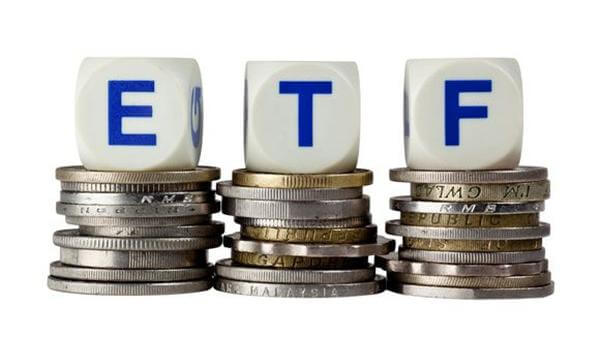
After the process of creating a brokerage account, it is essential for an investor to find that account before starting to invest in ETFs. The actual ways in which a brokerage account can be funded depend upon the broker. Once the account is funded, ETFs can be searched for, and they could be bought as well as sold in the same way the shares of stocks are. A great way to narrow down the options of ETFs is to use a screening tool for ETFs. A number of brokers provide these tools as a method to sort through many different ETF offerings. ETFs are usually searched according to some of the below-mentioned criteria. They are as follows: i) Volume: The trading volume over a certain period of time provides an understanding so that we can compare the popularity of different funds. The higher a fund's trading volume is, the easier it is to buy or sell that fund. ii) Expenses: The lower the expense ratio is, the lesser investments are compromised to administrative costs. Although it is tempting for investors to look for funds that have the lowest expense ratios, sometimes expensive funds ( for example, actively managed ETFs) have such strong performance in the market that it proves to be worthy of that high cost. iii) Performance: Even though the performance of an ETF does not define the possibility of low or high future returns, this is still a very widely used metric to compare different ETFs. iv) Holding: The portfolios that different funds have often worked as a screening decision for the investors and helped them to compare and differentiate between different holdings of every possible investment in ETFs. v) Commissions: A lot of ETFs don't have commissions, which means that they could be without any unnecessary fees in order to complete the trade. However, checking if this could be the deal-breaker is worth it. Advantages and Disadvantages of ETFsETFs have lower average costs as everything is expensive nowadays, and for an investor, it would be a battle to individually buy all the stocks held in an EFT portfolio. The job of an investor is just to buy one transaction and sell the other, which results in lesser broker commissions than usual as it is not common for trades to do the trades themselves. Brokers usually cost money from the commission for every trade they help in. Some brokers lower the cost even more for the investors by offering no commission trading on some low-cost ETFs. 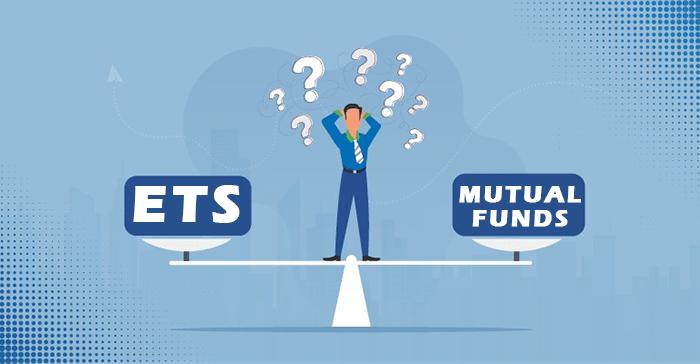
The expense ratio of an ETF refers to the cost needed to manage and operate the fund. Usually, ETFs have low expenses as they track an index. To understand it, let us consider that an ETF is tracking the S&P 500 index; it might have all the 500 stocks from S&P, making it a passively managed fund which demands less time. Although, all ETFs don't track an index passively, and therefore they have a greater expense ratio. Some advantages of ETFs are:-
A few negatives about ETFs are that-
ConclusionBecause of the different benefits offered by ETFs, they are considered essential for the economy. The liquidity, versatility, and low trading costs that come with ETFs make them a very popular vehicle for investment. Investors across the globe are very much interested in exploring the various offers of ETFs. Some investors also want to make ETF investment the main focus of their portfolio. ETFs can be beneficial as they provide lower operating costs as compared to traditional open-end funds. ETFs can be of great use as they provide greater transparency, flexible trading etc. Exchange-traded funds (ETFs) take the benefits of mutual fund investing to the next level. ETFs can offer lower operating costs than traditional open-end funds, flexible trading, greater transparency, and better tax efficiency in taxable accounts. There are drawbacks, however, including trading costs and learning complexities of the product. Most informed financial experts agree that the pluses of ETFs overshadow the minuses by a sizable margin.
Next TopicFull Form
|
 For Videos Join Our Youtube Channel: Join Now
For Videos Join Our Youtube Channel: Join Now
Feedback
- Send your Feedback to [email protected]
Help Others, Please Share










